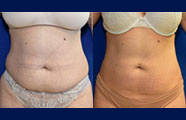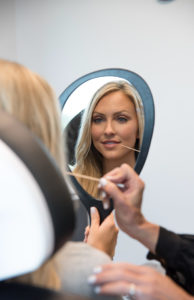
According to the American Society of Plastic Surgeons, there were approximately 7.4 million injections of Botox® and 2.6 million injections of dermal filler in 2018, making them the most popular minimally invasive cosmetic procedures in America. Due to their popularity, many of our cosmetic consultations are centered around both Botox and dermal fillers. Patients come with questions such as “What is Botox?”, “Isn’t Botox the same as dermal fillers?” and asking for one when they mean the other. Both cosmetic treatments are injections and effective at rectifying signs of aging, however, that’s where the similarities end.
Since we so often hear confusion about the two, we believe it’s important for us to outline what they are, where they work, the risks associated, and some of the differences. Coming to consultations and appointments even with just a little prior knowledge can make you all that more educated to ask the important questions and choose the procedure that will allow you to achieve your cosmetic goals. Read on to learn more!
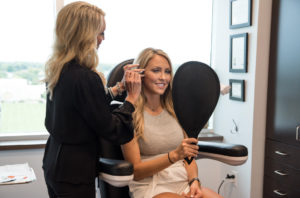
What Is Botox?
Approved for cosmetic treatment in 2002, Botox® Cosmetic quickly became the #1 selling treatment of its kind. Botox is an injectable muscle relaxer that diminishes the look of fine lines and wrinkles. Botox is effective because it targets the root of the wrinkle problem — relaxing the muscles and smoothing out the skin that covers their surface. By keeping the muscles smooth and relaxed, the skin across them stays tight and youthful.
Botox®, derived from a naturally occurring substance called botulinum, has only been harnessed recently to improve a wide range of “expression lines” of patients. Procedures last about 10-15 minutes and are easily accomplished without the need for anesthesia. Botox is targeted by injecting a fine needle into specific muscles that will improve your own personal trouble spots. It works by blocking nerve signals in the affected muscles, temporarily paralyzing, and relaxing the muscle. it can take up to seven days before Botox takes full effect, but its effect will last up to three to four months, leaving you with long-lasting wrinkle-free skin.
It’s important to remember that even though Botox® is a simple and safe procedure, it still is a medical treatment and should never be done without consultation with a licensed physician or experienced professional. It’s important that your provider carefully evaluates how your face naturally moves, so they can determine the best way to keep you looking refreshed and young while keeping your natural expressions. Avoid any provider that doesn’t take the time to carefully evaluate your face and form a personalized treatment plan for you. It’s also important to ensure you know that your injectables come from an FDA-approved manufacturer, such as Botox or Dysport. It’s also important to know that Botox shouldn’t be used to treat larger wrinkles caused by sun damage or gravity. Keeping a few important cautions in mind will create a safe, effective, and most importantly, beautifying cosmetic procedure experience for you.
Although generally safe, medical and cosmetic procedures always come with risks and side effects that you should consider. Originating from the fact that Botox® is an injection, the most commonly experienced side effects include pain, swelling, bruising, temporary headaches, or flu-like symptoms. Due to Botox relaxing the muscles, there is also a small risk for droopy eyelids, cockeyed eyebrows, crooked smiles, drooling, eye dryness, and or excessive tearing. However, at Pure 111, we have seen outstanding improvements in forehead lines, crow’s feet, frown lines, chin “dents,” brow lifts, and lip lines, among others. Keeping a few risks and cautions in mind has led to our patients being informed, selective, and as a result, pleased with their end look
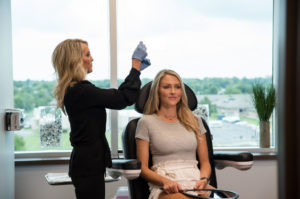
What Are Dermal Fillers?
Often known as “wrinkle fillers“, dermal fillers are soft, gel-like substances injected beneath the skin to temporarily diminish facial lines, restore volume, and soften creases. When administered by a trained, experienced professional, dermal fillers restore and enhance natural facial features almost immediately.
Most dermal fillers contain hyaluronic acid, a natural compound that combines with collagen and elastin to form the building blocks of your skin. Hyaluronic acid is the component that helps the skin absorb water, which helps your natural skin look brighter, hydrated, and firmer. We like dermal filers because they aim to restore your natural look, using materials that are already part of your skin, rather than using materials that your body is unfamiliar with. Treatments can be performed in less than an hour and can last anywhere from six months to two years, depending on the dermal filler used.
Like Botox®, dermal fillers are versatile, minimally invasive, treat wrinkles and lines, and require no downtime. However, in contrast to Botox which is best for fine lines and wrinkles attributed to muscle movement, dermal fillers are best for deep lines that are present even when facial muscles are not moving. These include the wrinkles caused by gravity and sun damage that has built up over the years.
Although dermal fillers are considered generally safe, there are some side effects and risks to consider before receiving the procedure. The most common problems are associated with the material injected including skin rashes, itching, pimple-like eruptions, redness, bruising, bleeding, swelling, lumps, and the ability to feel the filler substance under the skin. There can also be more serious but less commonly occurred side effects including, overcorrection of wrinkles, blindness, vision changes, and the death of skin cells due to loss of blood flow to the area. However, like Botox, working with a trained and experienced provider will help you avoid these side effects and achieve your desired cosmetic result.
At Pure 111, we love to use both Botox and dermal fillers with our clients. Botox we use to correct fine lines and wrinkles caused by muscle movement while dermal fillers see best results when correcting signs of aging caused by the decrease of collagen in faces, including fine lines, brow furrows, crow’s feet, frown lines, under-eye fine lines, acne scarring, vertical lip lines, and more.
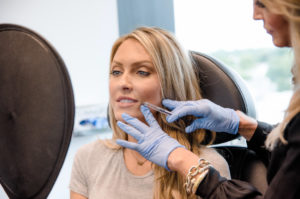
Key Takeaways
Before you ever get a Botox® or dermal filler procedure, it’s important to consider what you are trying to accomplish. Do you want to reduce dynamic wrinkles caused by facial expressions, or do you want to get rid of deep lines that show up when your face is relaxed? Both procedures are performed millions of times every year and have a good track record of safety, but knowing their differences is the most important part of achieving your desired cosmetic appearance.
Botox®: Is a natural compound called botulinum that relaxes the muscles to stop creases and wrinkles caused by facial expressions, typically found on the forehead and around the eyes. Results last three to four months.
Dermal Fillers: Typically made with the naturally occurring hyaluronic acid, fillers plump areas that have lost volume and smoothness around the mouth, thin lips, and cheeks. Results can last anywhere from six months to two years.

Next Steps
When considering any anti-aging treatment, safety is a top priority. It’s important to be absolutely certain that treatments are carried out by trained professionals and with quality, FDA approved materials. At Pure 111, we source all of our injectables from FDA-approved manufacturers, and we extensively train our specialists and medical staff to provide a personal, professional, and safe experience while minimizing possible side effects.
Ready to restore your youthful appearance with Botox® or dermal fillers? Contact our specialists at Pure 111 to set up a free consultation to help you discover which treatment is right for your unique needs
LINKS
https://www.plasticsurgery.org/news/plastic-surgery-statistics
https://www.botoxcosmetic.com/what-is-botox-cosmetic
https://www.botoxcosmetic.com/
https://www.dysportusa.com/what-is-dysport
https://www.mayoclinic.org/tests-procedures/botox/about/pac-20384658
https://www.webmd.com/beauty/wrinkle-fillers-what-you-should-know#1
https://www.americanboardcosmeticsurgery.org/procedure-learning-center/non-surgical/injectable-fillers-guide/
https://www.healthline.com/health/how-long-does-filler-last#longevity
https://www.americanboardcosmeticsurgery.org/procedure-learning-center/non-surgical/injectable-fillers-guide/#:~:text=The%20consistency%20of%20a%20CaHA,for%20deeper%20lines%20and%20wrinkles
https://www.medicalnewstoday.com/articles/320510
https://www.fda.gov/medical-devices/cosmetic-devices/dermal-fillers-soft-tissue-fillers
https://www.pure111.com/contact




